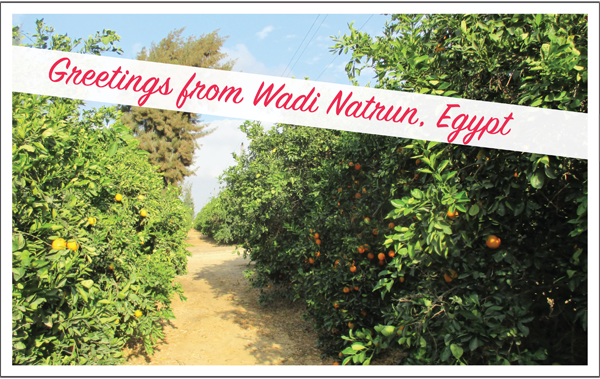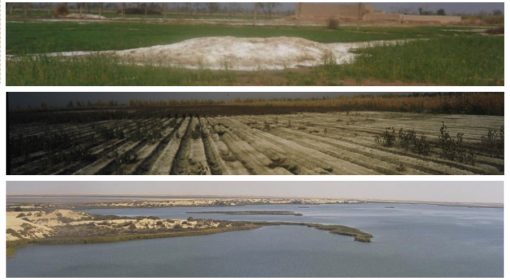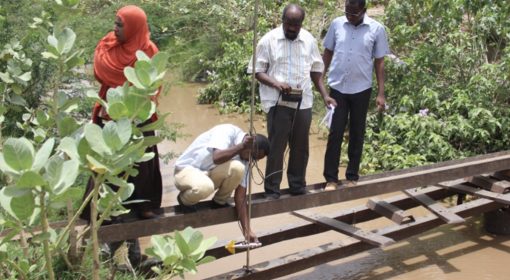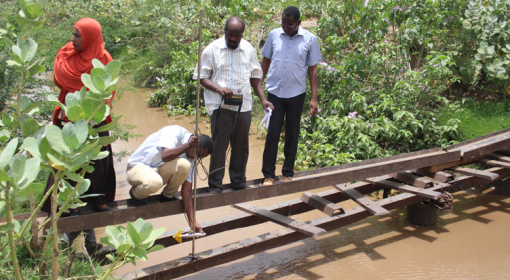Posted by Frank van Steenbergen
January 7, 2015
Post card from Wadi Natrun, Egypt
Over the last decades drip irrigation systems have been recognized and rightly so being one of the main ways of reducing water consumption in agriculture. Long hoses with clever tiny emitters source water exactly where it is required: close to the roots of the plants. Irrigation is provided in minute well-tailored quantities rather than water being washed over the fields and much of it never reaching the roots of the plants they are meant to nourish.
Drip systems are the emblema of precision irrigation. They not only save water, but because of well-dosed water gifts crop yields often go up. This because in the drier drip-irrigated system there are less fungi and diseases that affect crop yields. Or because, for instance, fruit trees do better in the spring season with precise drip irrigation as they do not shed their blossom.So presto there are more fruits at the end of the year.
There is another side to the miracle of precision watering as well: in several countries the introduction of drip irrigation has gone hand in hand with an expansion of the cropped area just because it is easy. As a result, where there was over-extraction of groundwater for instance, ultimately no water is saved and the same or more is used. The situation may even be worse – as with inefficient flooding types of irrigation a lot of the unused water ends up as groundwater: in precision irrigation this is not the case and often the so-called ‘evaporative fraction’ is higher. In layman’s words: a larger part of the unused water evaporates and ends up in the atmosphere from where it is hard to retrieve.
 There is another dark side and here is a picture on this from a citrus orchard grown in the hot desert of Egypt, close to Wadi Natrun. What happens here is that one applies the gentle drip irrigation on the trees that indeed do very well. But look a little further to the row between the tree lines. A little of the water inevitably leaks sideways to the soil underneath these paths between the citrus trees. And from there, exposed by the sun the water evaporates and leaves behind some of the salt that is always contained in the water in the soils. Take a decade or so and the soil in between the citrus trees becomes hypersaline. Research by the Cairo University for instance saw that the soil underneath the citrus trees was 800 ppm (not abnormal) but in the rows in between – just a meter or so away – it was 12000 ppm (part per million). By comparison seawater is 30000 ppm. So look at the postcard – this is how it looks: the path between the orange trees are moist – not because they get water but because they are very salty and ‘hygroscopic’ that they attract all water around them: dew, the little rain and excess water.
There is another dark side and here is a picture on this from a citrus orchard grown in the hot desert of Egypt, close to Wadi Natrun. What happens here is that one applies the gentle drip irrigation on the trees that indeed do very well. But look a little further to the row between the tree lines. A little of the water inevitably leaks sideways to the soil underneath these paths between the citrus trees. And from there, exposed by the sun the water evaporates and leaves behind some of the salt that is always contained in the water in the soils. Take a decade or so and the soil in between the citrus trees becomes hypersaline. Research by the Cairo University for instance saw that the soil underneath the citrus trees was 800 ppm (not abnormal) but in the rows in between – just a meter or so away – it was 12000 ppm (part per million). By comparison seawater is 30000 ppm. So look at the postcard – this is how it looks: the path between the orange trees are moist – not because they get water but because they are very salty and ‘hygroscopic’ that they attract all water around them: dew, the little rain and excess water.
Solutions? Yes there are. Burying the drip systems for instance or covering the land with mulch – all will avoid that water heated by the sun evaporates leaving the salt behind as a bad memory. The message? We need to keep looking for solutions and there is much we can do better in water management, but there will be a time when there is perfect perfection and by that time we need to have our human demands for water in order.


